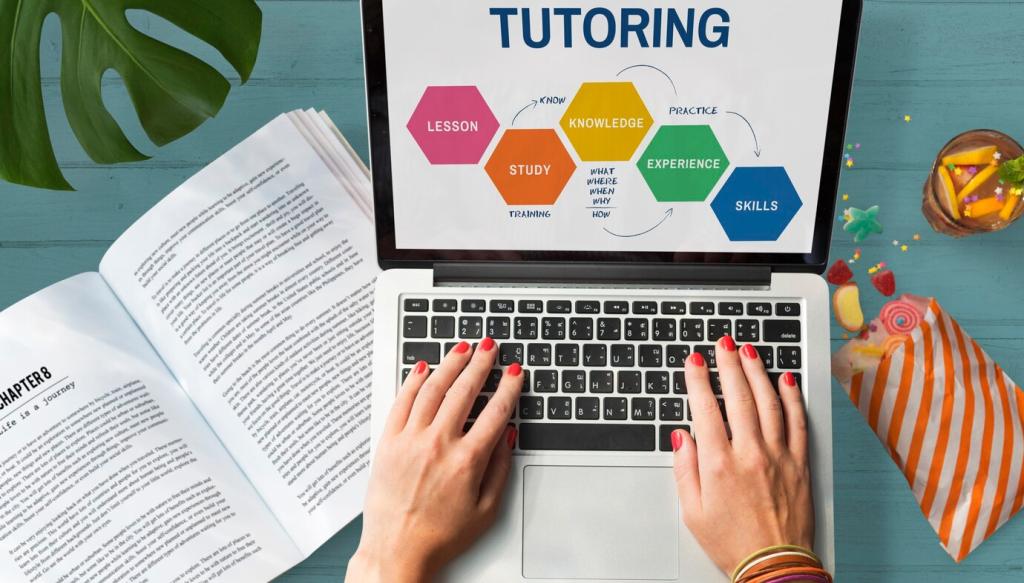
Design That Teaches: Effective Layout Design for Educational Content
Chosen theme: Effective Layout Design for Educational Content. Build pages that think like great teachers—clear hierarchy, meaningful visuals, and accessible navigation that help learners grasp concepts faster. Subscribe to receive templates, checklists, and new experiments straight to your inbox.
Type That Teaches: Readable, Purposeful Typography
01
Pair a calm, humanist sans-serif for body text with a sturdy serif or strong sans for headings. Limit styles to weight and size changes, not novelty. Consistency builds trust and reduces guesswork for learners skimming complex passages.
02
Keep line length near 45 to 75 characters and set line height around 150 percent. This balance discourages skipping and repetitive regressions. Test on phone and tablet screens, since cramped mobile columns quickly erode careful typographic clarity.
03
Design callouts, definitions, and captions with a slightly smaller size and softer tone, but never gray on gray. These supportive voices guide attention without shouting, reinforcing key terms right when curiosity peaks.
Structure with Intention: Grids, Whitespace, and Cards
Grids with purpose
Adopt a flexible twelve-column grid that supports both single-column reading and side-by-side comparisons. Align media and text edges to the same rails. Visual alignment whispers order, making new concepts feel approachable rather than intimidating.
Whitespace as pedagogy
Treat whitespace like a teacher’s pause. Increase spacing before outcomes, examples, and transitions so emphasis reads as intentional. Learners intuit importance from distances, building a mental map faster than any decorative divider could provide.
Card-based modules
Use cards to package lessons, glossary entries, or activities into tidy, repeatable units. Titles, brief summaries, and progress badges help scanning. After adopting a card system, Maya’s biology class saw module completion improve twenty-two percent in four weeks.
Contrast that clarifies
Target at least a 4.5 to 1 contrast ratio for body text and essential labels. Use saturated colors sparingly for emphasis and feedback. A neutral foundation with vibrant accents keeps attention on concepts rather than ornamental noise.
Color coding with meaning
Assign colors to categories consistently across pages, and pair them with icons or labels so color is never the only cue. Learners benefit from redundant signals, especially when printing in black and white or studying under glare.
Accessible palettes and states
Design focus rings, hover states, and selected states with clear thickness and contrast, not just subtler shades. Include error and success colors that pass contrast on both light and dark surfaces. Accessibility strengthens clarity for everyone.
Pictures that Teach: Media Placement and Explanatory Text
Image-text proximity
Co-locate diagrams with the sentence that references them to reduce split attention. Dual coding works best when eyes and brain do not commute across the page. Short, nearby labels beat distant legends every time.

Flow and Feedback: Navigation that Supports Learning
Place descriptive breadcrumbs that mirror course structure, not file locations. When learners backtrack, they stay oriented and confident. Consistent names avoid the uncanny feeling that links lead somewhere new when content is actually adjacent.
Flow and Feedback: Navigation that Supports Learning
Reveal complexity gradually, moving from overview to details and extensions. Collapse optional readings behind clear labels. This pacing respects cognitive limits while empowering advanced learners to dive deeper when curiosity or assignments demand it.
Flow and Feedback: Navigation that Supports Learning
Embed short checks for understanding immediately after key concepts, and place feedback alongside responses. Immediate, inline explanations reinforce correct mental models and prevent misconceptions from hardening during long, isolated study gaps.
